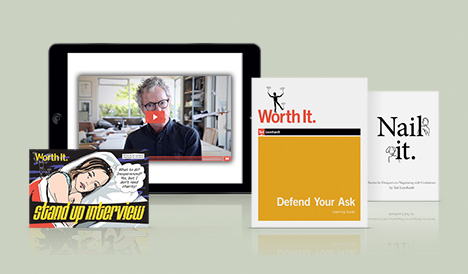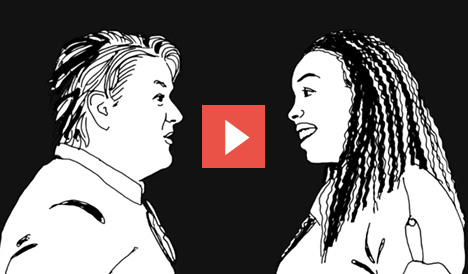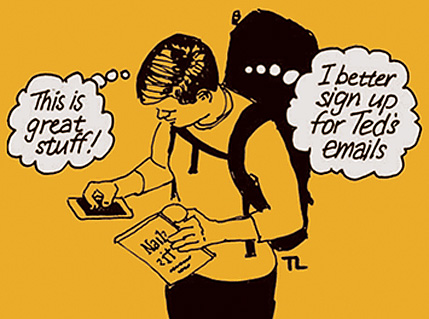How to Nail the Big Presentation

There’s a lot that goes into a successful presentation. You need to marshal all the right evidence to support your case. You need to finesse your delivery. And sure, a little luck and personality can play a role, too. But knowing how to check all those boxes properly isn’t all that easy. Many of us try to cover too many of these bases at once and wind up with unwieldy, unfocused presentations that sound more anxious than persuasive.
The good news is that simply knowing how to prepare can help you set the stage to get it right. This isn’t always easy to do, because our day-to-day jobs tend to draw our focus toward details that may not always matter when you’re trying to win over a boss, team, or prospective client with a super-important presentation.
To do that, you need to understand some bigger-picture issues that few of us usually take the time to map out. Personally, it took me years to learn to push back from my work and hit the conference room with my team weeks in advance in order to research, plan, and, (often most painful of all), practice for pitch day. But here’s how to do it.
First, Shift Your Perspective
Preparing for any big presentation means focusing first and foremost on the particulars of who you’re pitching to. If it’s a prospective client, that means researching their history, market position, affiliated industries, competitors, team members, ambitions, past failures, and key successes. That may sound obvious, but it rarely is. Many of us head to the drawing board initially with ideas about how to communicate our ideas, when what you really need is to first understand your audience’s needs and interests.
Earlier in my career, I made a huge pitch to a regional manufacturer that had been bought by a larger firm with global ambitions. I’ll call the company Daimyo for the sake of illustration. As a small creative firm in London, we were a little fish in that pond, but we’d made notable successes. I was hungry to pursue this new project and was thrilled we’d been asked to pitch. The Daimyo acquisition had been friendly. The new parent intended to take the brand global and had brought in a CEO who’d decided a complete brand refresh was in order.
Our pitch competitors were several monster-sized firms. They had vastly more experience in multimillion-dollar projects in Daimyo’s industry as well as with global brands. None of my employees (all usually ready, willing, and able to a fault) were jumping up and down to deliver this presentation, fearing we’d be waxed. But with a little cajoling, then arm twisting, I put together a strong pitch team and hired a researcher for full-bore homework on Daimyo, the parent, and their new CEO.
Before we could tackle anything else, we needed to understand Daimyo’s culture and where they saw themselves. Here are a few fundamental questions to ask yourself about whatever audience you’re trying to win over (these are geared to a prospective client, but they’re easily tweaked for other scenarios):
- How is this new initiative viewed within the corporation?
- Are there some groups within the company that will prosper as a result of the initiative?
- Are there groups that will feel threatened?
- What are competitors doing that will impact the rebranding effort?
- On what basis will the corporation measure success? What will it consider a failure?
And at a more tactical level, I sketched out these questions to ask the client’s representatives so we could keep the logistical parameters in sight:
- Why this project at this time?
- What fixed dates do we need to be aware of?
- What are the company goals with this project?
- Who will be on your project team?
Now Get Personal
Once you’ve started to understand your audience’s point of view from a handful of different angles, you’re ready to start brushing up on the individual decision makers who’ll be listening to you—and ultimately deciding your fate.
As part of my preparation for Daimyo, I read everything I could get my hands on about their new CEO, Samir. I also tapped my network to find anyone who might know anyone who knew him. From what I gathered, Samir was known as a powerful leader. He had an inclusive leadership style, but was also said to be self-assured and decisive: He listened, considering other people’s opinions, then made his ultimate choice without hesitation or doubt.
Why did it matter to find this out? Because I wanted to adopt Samir’s personal style as a model for my own pitching persona, reasoning that he might be drawn to the signs of a similar character in a potential collaborator. I thought, too, that Daimyo’s employees, already used to responding to Samir’s leadership, might respond well to those attributes.
In other words, I tried to behave how he behaved to reflect what was fast becoming Daimyo’s corporate culture.
Stay Consistent After Wrapping Up
Ultimately, the presentation went great. Our little firm made the short list and was asked to meet the next afternoon. As I cautiously patted myself on the back, I knew we hadn’t won yet. And before long, Daimyo’s representative asked us to commit to several weeks of spec work for a fee that can only be described as nominal. The meeting room suddenly went silent as everyone waited for my response.
We’d already determined in our preparation what it would cost to do our best for the company, and their rate wasn’t going to cut it. The work would suffer, our other clients would lose out, and my team would be drained. In short, if I said yes, it would mean I was a lousy leader.
So I asked myself, What would Samir do?
Sticking to my guns, I let them know firmly but politely that, much as we relished the opportunity to continue competing for the largest prize they had to offer—the whole rebranding portfolio—the work they were asking for would cost $100,000.
It was one of the most awkward moments of my business life. But even as we all uncomfortably said our goodbyes, I somehow knew it wasn’t over.
As my team and I boarded our flight back to London the next morning, I got a call from our main Daimyo contact. Asking us not to tell our competitors, they offered $75,000 for the spec work. At that point, I knew we’d be working with Daimyo for a very long time.
Originally published at FastCompany.




